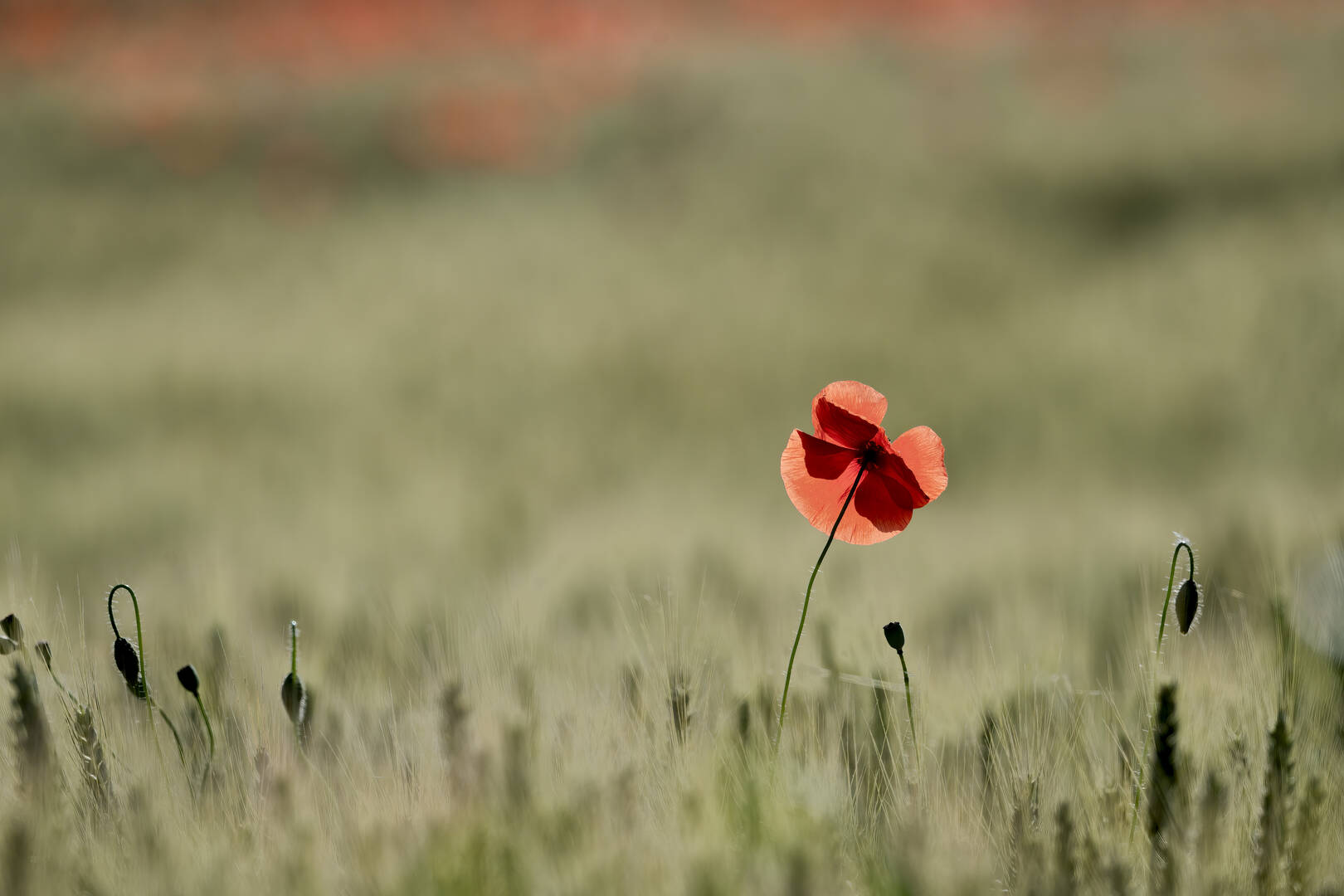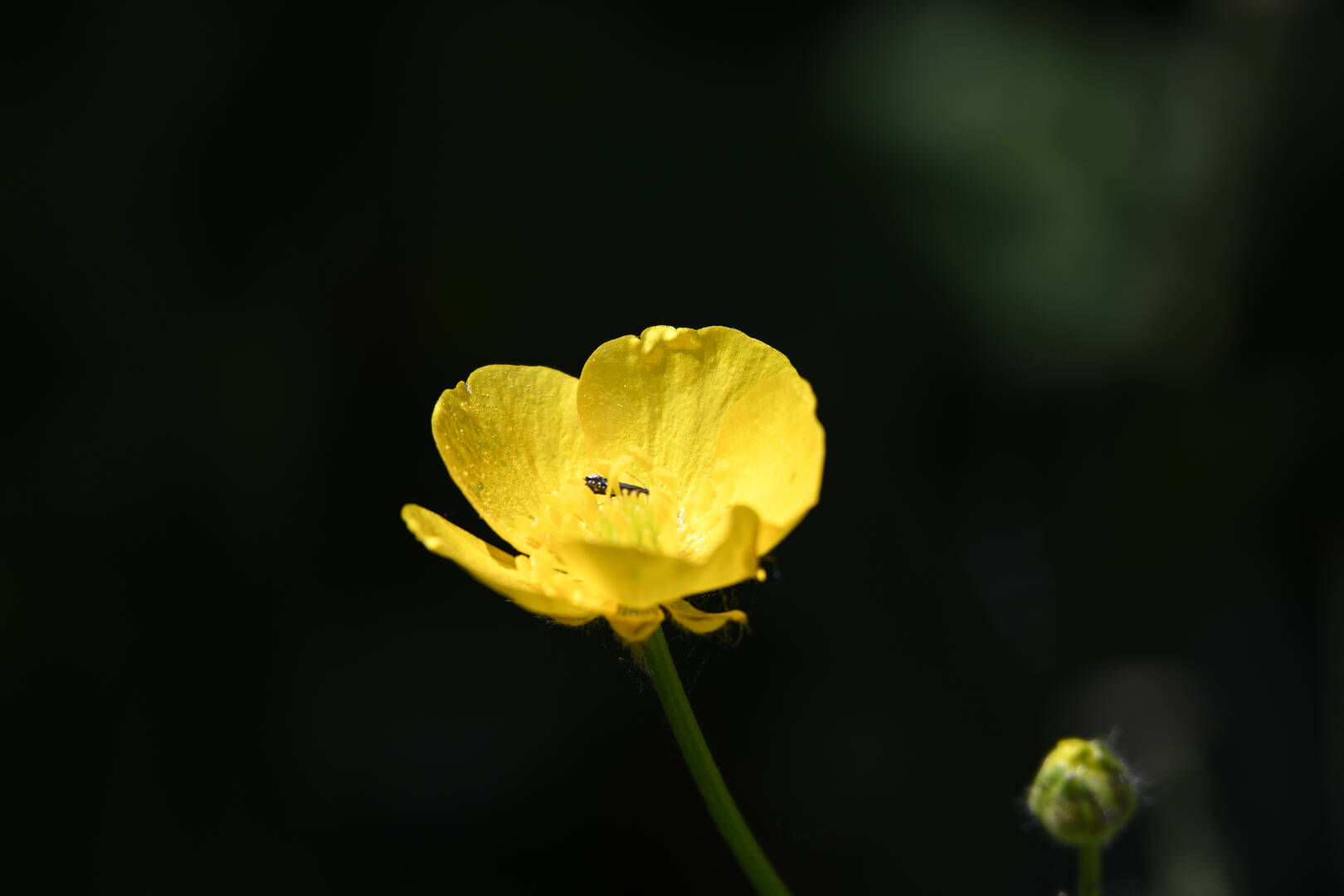By the time you’re reading this letter, I’ll be far away. But this isn’t a farewell – just the opposite. As we speak, I’m photographing high up in the Ecuadorian Andes on the western slopes of the Pichincha volcano. My plans for the coming weeks are anything but modest. In addition to shooting and hunting for inspiration for future articles, I’ll be testing some new gear and filming a few Online Workshops with some fascinating photographers. I won’t reveal the names or topics just yet, leaving it as a surprise. In the meantime, let’s take a look at what’s already out there. Here’s a quick roundup of last week’s photography news.

Recent Announcements
- Panasonic Lumix S1 II(and E version): A few months after introducing the 44.3MP Lumix S1R II, Panasonic has now announced its sibling, the S1 II! This full-frame camera features a 24.1MP partially stacked CMOS sensor, and the specs remind me a lot of the Nikon Z6 III. The 24 megapixel sensor and high readout speed (3.5 times faster than the Lumix S5 II) are the main differences compared to the 45-megapixel “R” variant. The new sensor enables faster continuous shooting (up to 70 FPS with the electronic shutter), pre-burst capture up to 1.5 seconds, and video recording up to 4K at 120p or 5.8K at 60p. The “E” version (does “E” stand for economy?) has the same resolution but uses a slower, conventional sensor. That means a drop in performance, but also a drop in price. Panasonic has set pricing at $3,198 for the Lumix S1 II and $2,499 for the Lumix S1 IIE.
- Panasonic Lumix S 24-60mm f/2.8: Panasonic already offers a similar lens: the S PRO 24-70mm f/2.8. While the new version is shorter on the long end, it’s also 391g lighter, 40mm shorter, and takes smaller, 77mm filters instead of 82mm ones. Most notably, it costs about half the price. In addition to its compact size and attractive price, the 24-60mm lens adds a function button and a customizable focus ring that can be set to control exposure compensation, aperture, and more. Its minimum focusing distance of 0.19m (0.3x magnification) is also impressive for a fast standard zoom. The lens will be available at the end of June for $898.
- DJI Mavic 4 Pro: A drone designed for professional photo and video applications. This Hasselblad on wings, like its predecessor, is equipped with three cameras. The main camera features a 28mm equivalent lens with a variable aperture ranging from f/2 to f/11, paired with a 4/3 CMOS 100MP sensor offering 15.5 stops of dynamic range and capable of recording 6K/60fps HDR videos. The second and third cameras, with 70mm and 168mm lenses, feature 1/1.3″ and 1/1.5″ sensors with resolutions of 48MP and 50MP. Both offer an f/2.8 aperture and 4K/60fps HDR video capture. One of the most significant features is the new 360° Infinity Gimbal, enabling 70° upward shots and full 360° rotation. New, more light-sensitive sensors (0.1 Lux) improve safety and navigation in low-light or nighttime conditions. The drone’s batteries can keep this 1063-gram device airborne for up to 51 minutes. Pricing depends on the chosen kit: starting at $2,699 for the standard version, $3,549 for the Fly More Combo, and up to $4,649 for the 512GB Creator Combo.
The Rumor Mill
Canon EOS R7 Mark II: A baby R1?
Back in the DSLR era, when Canon’s flagship was the heavy-duty EOS-1D X, photographers had the option to reach for its smaller sibling – the Canon EOS 7D Mark II. Nikon followed a similar pattern, with the APS-C Nikon D500 acting as a lightweight counterpart to the full-frame Nikon D5. Things are a little less clear in the mirrorless world, with Nikon’s Z50 II and Canon’s EOS R7 both being great cameras but not totally pro-grade. But the rumored EOS R7 Mark II may change that sometime this year.
Although the article on Canon Rumors feels more like a manifestation of wishful thinking, there are signs that the Canon EOS R7 Mark II could be a significantly more advanced camera than the current first generation. One quote sums up the authors’s hopes pretty well: “The EOS R7 Mark II will potentially be something like a baby EOS R1 with an APS-C sensor.”
The sensor will no doubt be the star of the show. Wildlife photographers – arguably the most eager group for this camera – would love to see a stacked sensor with high readout speeds while retaining the current 32.5MP resolution (or similar) of the EOS R7. That would allow for high electronic shutter framerates without the dreaded rolling shutter issues.
Another area where the original R7 left plenty of room for improvement was the buffer depth. It would also be useful to have at least one of the slots for fast CFexpress type B cards. Combine all of that with the autofocus tech from the R5 Mark II, or even the R1, and you’d have a seriously compelling wildlife camera on your hands.
The only question is how much a camera like that would cost, and whether there’s a big enough market to justify making it. That’s probably one of the key reasons why a true D500 successor still hasn’t materialized (although the Z50 II gets fairly close).
Via Canon Rumors
The Rumored Offspring of RED and Nikon
Ever since Nikon brought RED under its wing, the photo and video community has been speculating about what the future might hold. The first results of this partnership have mostly been software-based – things like RED N-Log LUTs. The first tangible sign that Nikon is taking video seriously surfaced recently in the form of the Nikon Z 28-135mm f/4 PZ lens RED cameras equipped with a Nikon Z-mount.
But what everyone’s really waiting for is a new camera that would merge the expertise of both brands, and it might be arriving as soon as the second half of this year. Its name is rumored to be the Nikon Zr or Nikon ZR (R for RED). Nikon is typically excellent at keeping upcoming products under wraps, so the outline of this camera is still rather blurry.
However, rumors suggest it will feature a brick-shaped design, something RED users are already familiar with. According to Nikon Rumors, there won’t be a pentaprism or even an EVF, but it should boast a very large LCD screen. In terms of layout, think something between the current RED cameras, Sony FX3, and Nikon Z30. Naturally, it’s also supposed to inherit a fair share of features and tech from RED, whose cinema camera expertise is undeniable. As for the sensor, the new camera will reportedly be built around the familiar semi-stacked sensor from the Z6 III.
Via Nikon Rumors
Good Deals and New Sales
The highly rated WANDRD line of camera bags is on sale this week, with many of their products getting a hefty 20-68% discount. These are still expensive bags, but this sale makes them look very competitive compared to other high-end companies like Peak Design and F-Stop Gear. Here’s a selection on B&H:
- 68% off: Small, medium, and large Cross-Body bag (was $80-100, now $25-32)
- 50% off: 45 Liter Transit Travel backpack (was $330, now $165)
- 50% off: 35 Liter Transit Travel backpack (was $300, now $150)
- 30% off: PRVKE backpack in 21, 31, and 41 liters, with and without the “photography bundle” of a camera cube, waist belt, and accessory straps (was $220-364, now $153-255)
- 30% off: PRVKE Lite roll-top backpack (was $240, now $167)
- 20% off: Stratus 18 Liter backpack (was $230, now $183)
- 30% off: ROGUE 9 Liter Sling bag (was $160, now $111)
- 30% off: ROGUE 6 Liter Sling bag (was $140, now $97)
- 20% off: 3.5 Liter Tech bag (was $64, now $51)
- All of the bags except for the Cross-Body bag and the Stratus backpack also get the same sale on Amazon: 45L Transit, 35L Transit, PRVKE backpack, PRVKE Lite, 9L Sling, 6L Sling, and 3.5L Tech bag.
Nikon’s spring sales still have a little bit of air under the feathers, but not for long. The following cameras and lenses either match or beat their previous all-time lowest prices. Starting with cameras:
- Nikon D7500 (Was $1000, now $700)
- Nikon D780 (Was $2000, now $1400)
- Nikon D850 (Was $2400, now $1800)
- Nikon Z30 (Was $710, now $560)
- Nikon Zfc (Was $960, now $860)
- Nikon Z5 (Was $1400, now $1000)
- Nikon Zf (Was $2000, now $1800)
- Nikon Z6 II (Was $1600, now $1400)
- Nikon Z6 III (Was $2500, now $2100)
- Nikon Z7 II (Was $2300, now $1800)
- Nikon Z9 (Was $5500, now $5000)
And lenses:
- 14-24mm f/2.8 S (Was $2500, now $2000)
- 24-70mm f/2.8 S (Was $2400, now $2000)
- 24-120mm f/4 S (Was $1100, now $1000)
- 26mm f/2.8 (Was $500, now $400
- 40mm f/2 (Was $300, now $200)
- 70-200mm f/2.8 S (Was $2700, now $2200)
- 100-400mm f/4.5-5.6 S (Was $2700, now $2300)
- 105mm f/2.8 VR S Macro (Was $1050, now $850)
- 135mm f/1.8 S Plena (Was $2500, now $2300)
- 400mm f/2.8 TC S (Was $14,000, now $13,000)
- 600mm f/4 TC S (Was $15,500, now $14,000)
Other Pages of Interest
A (not-yet-public) documentary called The Stringer has claimed that famous documentary photographer Nick Ut is not the photographer behind the historic image Napalm Girl. Most photographers are clearly siding with Ut, and the Associated Press has fully backed him after an exhaustive process of gathering evidence – so has Phan Thi Kim Phuc, who was the girl in the photo and who has said for decades that Ut took her to a hospital after capturing the photo. Nevertheless, this week, World Press Photo has controversially changed the credit on this image to “Unknown.” Is this a black mark on World Press Photo?
Is film making a comeback? Certainly in the world of big movie productions, it is. The two most recent Best Picture winners, Anora and Oppenheimer, were both captured on film. Now it’s been confirmed that Christopher Nolan’s upcoming epic The Odyssey will be fully shot on film as well, in particular 65mm iMax film (in fact, it will be the first movie fully shot on this format). This trend certainly has grown, so maybe take this as some inspiration to dust off your old Minolta and bring it out for a spin.
In otherworldly news, have you ever been fortunate enough to photograph the Aurora Borealis? If so, you have something in common with the Martian rover Perseverance. Earlier this week, NASA released the first-ever photograph of the Aurora ever captured from a different planet (although any alien photographers off in the galaxy may dispute that claim). Though it’s a little on the grainy side, it’s still amazing to see that one of the most beautiful sights on Earth can be viewed across the cosmos, too.
Photo Theme Challenge, Week #102
Last week’s theme was wildflowers, and you can see the results in this thread. Thank you to everyone for your submissions! This week’s theme is sun in the frame, and you can submit your results in this thread by Saturday, May 24, 2024!
Week #101 Results
Let’s check out some of the shots we received for the “wildflowers” theme, starting with Danny’s photo:

The multiple growing blooms here emphasizes the main and tallest flower!
Mauro70’s photo:

I like how there is just a hint of out-of-focus poppies at the top.
Frederic Dantzer’s photo:

The dark black-green background accentuates this flower’s brilliant yellow.
Thanks everyone for submitting their photos in the challenge, and we hope to see more next week in the sun in the frame theme.